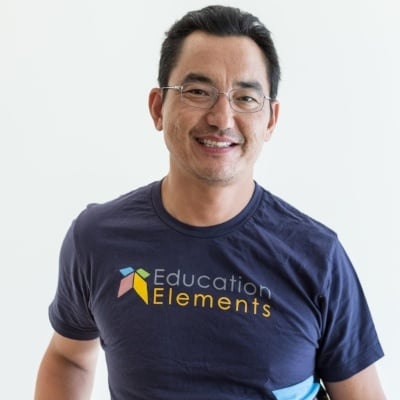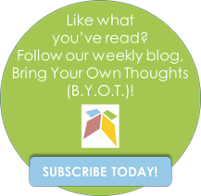Doubling Down on Personalized Learning in 2015
2015 will be a critical year for k-12 education. We have the opportunity to lean forward and continue to make progress with personalized learning for every child.
2014 Wishes - Some Were Granted
As I was preparing to write this post, I reflected on some of my previous New Year’s predictions and observations. In 2013, I wrote a post, with five wishes and looking back it is interesting to see how many came true:
-
Allow schools to try new models without too much criticism or scrutiny while they try to figure this (personalized learning) out.
Looking back at 2014: Over the past two years, a lot of models were tried. Our team at Education Elements helped districts with hundreds of school models and thirteen of the Next Generation Learning Challenge Grant winners are ones we’ve supported. As important as new models are, we also saw “old” models work and as Michael Horn predicted in 2013, the station rotation model is solid and expanding. I also backed up the station rotation model in this post in EdSurge.
-
Content providers need to make the shift from products that are supplemental to instruction to meet the needs of core instruction.
Looking back at 2014: Our content partners are doing just this. Many have rewritten their curriculum to support Common Core and have moved their technology to the cloud. Our partners like iReady, Imagine Learning, and Compass Learning all have made substantial upgrades to their curriculum and technology.
-
Schools and foundations shouldn’t be developers or owners of software products.
Looking back at 2014: I know I said this, but no one heeded my advice. The Gates Foundation launched InBloom which ended up shutting down in less than two years.
-
Let's be realistic about what software can do today.
Looking back at 2014: I think the exuberance of mythical omnipotent learning software has worn off a bit. Fewer people are making reference to automated playlists like Pandora or recommendations similar to Amazon. Hopefully by now, we know that creating custom playlists for each student takes tremendous time and understanding. Just ask the teachers at Summit Public Schools. For them it didn’t happen overnight, but instead took several years of dedicated investment. In the future, resources will be plentiful, but curation will be critical. Just do a YouTube search on a topic for yourself and see how much content there is -- the challenge is really curating the best content for your needs.
-
Big data, let's be real here. We don't have it in education today. According to IBM, 90% of all the data collected in the world was created in the last 2 years (since 2011). Twitter creates 12 terabytes (1024 gigabytes) of data a day.
Looking back at 2014: As I mentioned, we need to focus on making the data we have in education more easily understood. We have enough data to take action, but the actions are time consuming to execute and teachers have no time to prepare for this.
Some things that are showing promise
-
Districts are finally starting to realize that it’s not about the device. Perhaps the news around the iPad deployment at LAUSD opened people’s eyes finally. If you haven’t figured it out already, check out our whitepaper.
-
Blended learning is producing results. Last year our district clients administering the NWEA MAP assessment saw 154% growth in reading and 125% growth in math. In Michael Horn’s Forbes blog, he writes about the tremendous results districts are seeing with blended learning.
-
Districts are implementing blended and personalized learning at scale and doing it well. Organizations like the League of Innovative Schools are really helping drive leadership and innovation with school districts (We work with 10 of the districts in the League). Programs like Race-to-the-Top District spurred high quality implementations like Enlarged City School District of Middletown and Iredell-Statesville Schools (Both of which are our district partners).
-
Districts are thinking about scale, sustainability, and finding the right starting point. In 2015, we should see more districts implement personalized learning as part of their 3 to 5 year strategic plan. I’m excited because some of these districts are well known like Philadelphia, who is dipping their toes with blended learning; or Fulton County Schools, who’s been very thoughtful and deliberate about their approach to scale 90 schools. Even more exciting are the smaller 3,000 to 10,000 student districts who are going all in, district-wide with personalized/blended learning like Uinta 1 School District in Wyoming or Lexington 1 School District in South Carolina.
What we at Education Elements are planning for 2015
-
We encounter a lot of districts with a district vision but limited supports for schools or with a handful of schools trying blended learning on their own without it impacting the rest of the district initiatives. For 2015, Education Elements will focus on helping our district partners bridge this gap. We are finalizing our district frameworks to personalize learning, to help build capacity, knowledge, and supports for schools.
-
Many edtech companies use the term analytics loosely and show tabular reports and red-yellow-green color coding. True analytics provides analysis of potential trends and provides the effects of certain decisions. The Education Elements personalized learning platform, Highlight, will provide true analytics, saving teachers time by surfacing the relevant information teachers need about their class activities in a blended environment. Our research shows that teachers can spend less than ten minutes a week looking at data, which isn’t enough time to analyze data nor act upon it. With Highlight, we give teachers data they can understand and act on right away. It will help teachers save the thirty minutes (or more) it can otherwise take to analyze each report.
-
Over the last four years in working with over forty different edtech partners, we’ve learned a lot about the different products in the market. We usually get four to five new companies inquiring about a partnership with us every week, and as a result we’ve reviewed hundreds of edtech products. Each of these companies go through a multi-stage evaluation for us to recommend to our district clients. In 2015, we’ve added a few new partners:
-
Versal: allows teachers to create captivating online courses with a robust course creator
-
Edusight: a fast simple to use gradebook so teachers can save time
-
Edgenuity: a rigorous online curriculum with direct-instruction videos for high school
Additionally, we are deepening our partnership with some of our district favorites, like: iReady, Achieve 3000, ST Math, Dreambox, Aleks, Lexia, My On, Imagine Learning, and Compass Learning.
-
Professional development is the critical part of any change or implementation. It’s not just about product training, but helping the users understand how to apply the tools consistently and with success. In 2015, we will continue to be a trusted partner to our partner districts. We are model, device, and content agnostic. We focus on recommending the right technology for the best outcomes and on making sure the biggest change is not only that there is technology, but that teachers teach, and students learn, differently as a result.
-
We will continue to lead the way in implementing personalized and blended learning with our district partners. To date, we’ve worked with over a hundred districts and schools on their personalized learning journey. The districts we work with will always be improving as excellence is a journey, not a destination. In 2014, we saw our district partners see 154% growth in reading and 125% growth in math, so the bar is set pretty high for 2015.
The Cathedral and the Bazaar
In 1999, during the height of open source software, Eric Raymond published a book, The Cathedral and the Bazaar. The book is about software development models. The Cathedral model is built by a group of developers based on a central plan. It’s a monster project, much like building a cathedral. Microsoft Vista would be an example of this. The Bazaar model builds upon a basic kernel, individual developers improve functionality as they need to, basically crowdsourcing software. Linux would be an example of the Bazaar model. Then there are hybrid models, the browser Firefox started out of Netscape as a Cathedral and later became a Bazaar.
I bring this up because we are at a transitional state with k-12 education. We are long past Cathedral projects in school design. In fact, we don’t want them. The Bazaar model is interesting, but it’s hard to replicate. I think that a hybrid approach to school design and technology will be the most successful in coming years. In Raymond’s book he points to lessons learned, which I’ve modified for education:
-
Every innovation at a school or a district starts with one person’s itch to make the change.
-
Good teachers know what to teach. Great ones know what to re-teach.
-
Plan to throw one version of your school design away.
-
If you have the right attitude, interesting opportunities will find you.
-
Treat your students as co-creators of learning.
-
Listen to your students. Try new instructional strategies early and do it often.
-
If you treat your students as if they’re your most valuable resource, they will respond by becoming your most valuable resource.
-
The next best thing to having good ideas is recognizing good ideas from others.
-
Often, the most striking and innovative solutions come from realizing your concept of the problem was wrong (This one is unchanged).
-
Perfection (in design) is achieved not when there is nothing more to add, but rather when there is nothing more to take away.
I’m excited and optimistic about 2015. Over the last five years since personalized/blended learning has become mainstream, districts have made a lot of progress in personalizing learning for every child. I would estimate approximately three hundred districts across the country have started their journey implementing personalized/blended learning, and I respect each one for their leadership and willingness to take the leap. It’s critical that we all lean forward, bring awareness, and share knowledge to the 13,000 other districts who haven’t prioritized personalized/blended learning in their strategic plans. So I ask all district leaders to share their vision, rationale and strategies with their peers, because personalized learning will better prepare our students for career/college readiness and enhance the skills of our teaching workforce to more effectively transfer knowledge. Share with others by using #ishareknowledge @edelements.
About Anthony Kim
Anthony Kim is a Corwin Press bestselling author, with publications including The New Team Habits, The New School Rules, and The Personalized Learning Playbook. His writing ranges the topics of the future of work, leadership and team motivation, improving the way we work, and innovation in systems-based approaches to organizations and school design. Anthony believes that how we work is the key determinant to the success of any organization. He is a nationally recognized speaker on learning and his work has been referenced by the Christensen Institute, iNACOL, EdSurge, CompetencyWorks, Education Week, District Administration, and numerous research reports. In addition to his writing, Anthony is the founder and Chief Learning Officer of Education Elements, a trusted partner and consultant to over 1,000 schools nationwide. Anthony has been the founder of several companies across multiple industries, including online education, ecommerce, and concerts and events.



